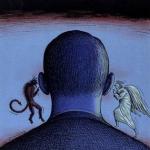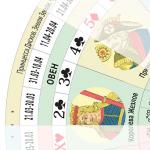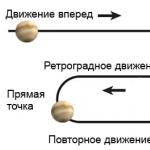Creative Suffering and Platonic Love by Michelangelo Buonarroti: A Few Fascinating Pages from the Life of a Genius. Is it true that Michelangelo left secret messages on the ceiling of the Sistine Chapel? Why didn't they hire a professional actor?
The ceiling of the Sistine Chapel has been impressing visitors for more than five hundred years. Every year, a great work of art attracts millions of tourists and occupies a special place not only in world art, but also in Christianity.
History of frescoes
Michelangelo Buonarroti started this grandiose project at the age of 33, in 1508. The chapel was opened to the public in 1512. The ceiling was given to him with difficulty and, according to Michelangelo himself, no money would be enough to pay for his hellish torment and the sacrifices that he was forced to make.
He painted all the frescoes while standing, and not lying on his back, as many believe. Raised up for many hours on end, the hands and head led to terrible headaches and muscle spasms.
The spread of the fungus on the ceiling led to the fact that the first layer of frescoes had to be completely removed. After the ceiling was dry again, Michelangelo prepared and applied the primer himself to avoid re-spreading of the fungus.
The chief architect of the Vatican, Donato Bramante, did not really like Michelangelo (probably because he patronized Raphael) and did not try to provide him with comfort, so Michelangelo had to design scaffolding for himself, on which it was convenient to work on painting the high ceilings of the chapel.
In addition, Michelangelo did not consider himself an artist, since he was already a well-known sculptor at that time, whose works (David and Pieta) were striking in beauty and realism. At the request of Pope Julius II, he had to take on the painting of the chapel, but the artist insisted on reserving the right to choose subjects.
The result of the work

As a result, Michelangelo, an aspiring artist, managed to create one of greatest works world art, which to this day intrigues and delights all connoisseurs of beauty.
Despite hellish conditions and an incredible amount of work (more than a thousand square meters), Michelangelo depicted nine scenes from the Old Testament, including more than three hundred human figures depicted in real size. These images and incredibly accurate anatomy have inspired generations of artists and scientists. The Creation of Adam mural, in which the fingers of God and Adam almost touch, is one of the most recognizable and copied works of art in human history.
Hidden symbols

Although in 1508 there was a flowering in the yard high renaissance, the church was nevertheless distinguished by extreme strictness, did not like and in every possible way suppressed the attempts of great minds to spread too progressive ideas.
That is why the assumptions that one of the greatest artists history has succeeded in hiding secret symbols in its very famous work, are exciting and intriguing in their own right.
Not all symbols, however, were so secret. For example, in gratitude for the fact that Pope Julius II allowed Michelangelo to change the subjects of the frescoes, the artist depicted acorns on many of them.
What's the point? The fact is that the name of the pope was Rovere, translated from Italian - oak.
Symbolism of Judaism

Acorns were not the only part of the hidden symbolism that Michelangelo included in his work.
In the depiction of the Fall and Exile from Paradise, the Garden of Eden does not contain the infamous apple tree. In its place stands a fig tree - traditional element Jewish religion, not Christianity.
In fact, in many scenes from the Old Testament, Michelangelo actively uses Jewish symbolism. According to historians and art historians, the artist thus tried to send a kind of message to the church that Christianity had gone too far from its Jewish roots.
Image of God

However, Michelangelo himself strongly departed from Judaism at the moment when he decided to depict God.
Christianity is the only Abrahamic religion that allows people to create an image of God. Prior to Michelangelo, Western art depicted God as either a hand or a source of light, but did not take a clear physical form.
Michelangelo went against the accepted foundations and portrayed God in human form. It was this adult bearded man who became typically God for all Christendom.
God is mind

Take a close look at the fresco "The Creation of Adam", namely the image of God and the angels surrounding him. In 1990, doctor Frank Lynn Meshberger discovered that the image of the human brain is hidden in the image of God and his retinue. According to art historians, this suggests that God gave Adam not only life, but also reason.
The depiction of God and his retinue is so complex that not only does its outline resemble the brain in shape, but individual elements of the fresco (for example, the leg of an angel) almost exactly repeat the outlines of the brain regions (pituitary gland).
Another brain
A study of the frescoes in 2010 uncovered another representation of the brain, this time hidden in the "Separation of Light from Darkness" mural. Under the highly raised chin of God, on his neck, a part of the human brain is clearly visible, namely the trunk, part of the temporal lobe and the medulla oblongata.
According to them, Michelangelo, who has been actively studying anatomy on cadavers since the age of 15, could not accidentally depict such a complex structure on the neck of God - a part of the body that is usually smooth.
Feminine

A Brazilian study published in the journal Clinical Anatomy in 2016 found that the artist depicted other internal organs in addition to the brain.
Not without the feminine. According to researchers, the ram's skull, which is depicted eight times on the ceiling of the Sistine Chapel, is very similar to the female reproductive organs.
In addition, on the frescoes there are several times triangular shapes depicted with the point down, which has long symbolized the “sacred feminine principle”. It was a popular motif in classical Greco-Roman art. However, this attitude threatened the patriarchy of the Catholic Church.
Atypical for everything Western art of that time, the fact that in many scenes depicted on the ceiling of the chapel, women are assigned a central role. Considering that the ceiling depicts only scenes from the Old Testament, where there was no Virgin Mary with a baby, such attention to women is really unexpected.
Today one can only guess whether the hidden symbols were an attempt to fool the church around its finger, remind it of its roots, or bow down to science, reason and feminine. Or maybe these symbols have completely different meanings, or there are no symbols at all? Or maybe there are still many hidden messages that no one has yet seen?
MOSCOW, February 4 - RIA Novosti. Italian scientists analyzed the portraits of Michelangelo Buonarroti and concluded that he suffered from degenerative arthrosis of the hands, which, however, did not prevent him from creating due to the fact that his tendency to constantly work slowed down the destruction of bones, according to an article published in the Journal of the Royal Society of Medicine.
Michelangelo is rightfully considered one of the greatest artists and sculptors of the Renaissance and of all mankind in general - in 89 years of his life he created many greatest masterpieces, many of which, such as the Last Judgment fresco, the statues of David and the Dying Slave, determined the development of European culture for decades and centuries to come.
One of the main secrets of Michelangelo was, according to Davide Lazari from the University of Florence (Italy), how the great artist worked in his old age if he, according to the memoirs of his nephew Lionardo Simoni, suffered from the most serious problems with the mobility of the joints, which most of Buonarroti's biographers consider to be the result of the development of gout.
Lazzeri and his colleagues doubted this and studied in detail how the hands of the master looked in last years before his death, and also re-analyzed all known sources about his life, including portraits of the artist, autobiographies of other contemporaries, and memoirs of relatives and friends.

Thanks to the portraits made in different periods of Michelangelo's life - at 60, 65 and 70 years old - the authors of the article were able to reveal what the artist actually suffered by comparing how left hand maestro. According to them, Buonarroti really experienced severe joint pain, but the cause of their appearance was not gout, the accumulation of urea crystals, but degenerative arthrosis.
This is supported by special deformities in the joints of the thumb, metacarpal bones and a number of other elements of the hand, as well as the absence of visible signs of inflammation in the vicinity of these bones, which are usually associated with the development of gout. The destruction of these joints as a result of degenerative processes deprived Michelangelo of the ability to write, since his thumb actually stopped bending.
Considering that the great artist lived for at least another 15 years after painting these portraits, the question arises, how did he manage to fight the disease? According to Lazzeri and his colleagues, Michelangelo was both helped and hindered by his desire to constantly work - all the while working through pain, the artist slowed down the destruction of the joints and adapted to the constant limitation in their mobility.
Nearly 500 years after Michelangelo painted the ceiling of the Sistine Chapel, young medical student Franz Meschberger was preparing for his exams at the Anatomy Theater of the Medical Institute in Indianapolis, and for the time being did not realize how close he was to deciphering a message from one of the world's greatest artists. .
Usually he dissected the same corpse, giving cloying and bad smell formalin, an aroma very familiar to him, but that day he had a new subject for analysis - a fresh brain.
On the table in front of him were drawings by renowned medical aid illustrator Frank Netter. Meshberger approached the task very responsibly, making several drawings before he cut open the brain, compared them with Netter's illustrations, then made another series of drawings himself. After spending three hours of hard work, as he always did when he worked in an anatomical theater, he realized that he needed to take a break and change his occupation.
Almost immediately, the student was immersed in the Michelangelo book and as he turned the pages, he came across the three-page spread of The Creation of Adam, a scene adorning part of the ceiling of the Sistine Chapel. The fresco depicted a god (surrounded by angels and with the unborn Eve under his arm) holding out his hand to Adam. Adam, on the other hand, leans back, also stretches his hand to God with a casual gesture.
Meshberger's head, filled with images of the human brain, was primed to see what no one had been able to see before.
“I was immediately struck by the shape of the outline surrounding the god and the angels,” he recalls. "It was exactly the same as the item I've been working on all day!"
Without a doubt, this shape resembled a cross section of the human brain. “I was overcome by a feeling of déjà-vu,” Meschberger says, and admits that at the moment of opening, goosebumps ran through his body.
The first thing that caught his attention was the hem of the green tunic, which is a vertebral artery that spirals up towards the pons. “Then I drew attention to the elongated leg at the base of the picture. I saw in it the anterior and posterior parts of the pituitary gland. The angel’s leg was not five, but two-toed. .
The symbolism of this image is obvious: Adam receives a gift from the Lord God. But this is not the gift of life, because he already lives. H. W. Janson in his book “Fundamentals of Art History” notes that “(Creation) is not a modeling of the body of Adam, but rather the transfer of divine breath to him - the soul.
Since the receptacle of the soul is the mind, the message is hidden inside the contours of the brain: God gives Adam the mind. “And the mind is God,” adds Dr. Meshberger.
Dr. Meshberger almost forgot about his discovery. He became an OB/GYN, opened his practice and delivered over 3,000 babies before returning to discovery and putting all the elements together into an acceptable theory.
But from time to time he casually asked his friends and acquaintances: “Do you know that Michelangelo’s fresco contains a secret message?” Three years ago, when he became convinced that no one had heard of his theory, interest in it revived in him. “I wanted to know if my observation was a well-known interpretation of the image or something new.”
He continued, in his spare time, the study of the life of Michelangelo and the result made him think. Born in 1475, the artist, who was called the "divine Michelangelo" when he sculpted the Pieta of St. Peter's Basilica in Rome, was 24 years old. This work made him instantly famous, and the sculpture of David, completed five years later, cemented his fame as a genius. In 1508, Pope Julius II commissioned him, a sculptor by main vocation, to paint the entire vault of the Sistine Chapel with a total area of 1,768 square meters. The fact that the master, who had almost no experience in fresco painting, created a masterpiece in just four years speaks of the scale of his genius. The fresco depicts more than three hundred characters and many scenes, only one of which is "The Creation of Adam".
Dr. Meshberger's enthusiasm grew as the research continued. He did not find any mention anywhere that the fresco depicts the outline of the human brain. He began to study the image even more closely, and the idea occurred to him to superimpose a mural slide on the transparent drawing of the human brain, made by Frank Netter. The result was amazing. “The drawings matched almost exactly,” he says, adding in a low, measured, almost graveyard tone: “I just got creepy.”
It was obvious that the mural concealed much more than Dr. Meschberger thought. "The overlay of the slides led to what I understood: the back of one of the angels corresponds to the pons, and the lower leg and thigh correspond to the spine." But that is not all. The right two-toed leg of the angel bent at the knee (while the legs of God and other characters had five fingers) was a section of the optic chiasm, the thigh was the optic nerve, and the leg itself was the optic tract.
These undeniable facts were clearly no mere coincidence. Yes, and all the work of Michelangelo is imbued with symbolism that wrings the soul. Experts know that his works are fraught with countless mysteries that have not been clarified until now. today. They may remain so forever. But is the assumption that, in the outline of the brain, Adam receives the gift of reason from God with life philosophy Michelangelo himself?
Obviously yes.
Born in the heyday of the Renaissance, the artist adhered to the philosophy of Neoplatonism and, as Dr. Meshberger notes, the followers of this current of thought believed, among other things, that "the divine part that man receives from the Creator is the mind." Michelangelo stated this more than once, both in his poems and in conversations with friends.
If his philosophy coincides with the meaning of the message of the fresco, then what about the knowledge of anatomy? Those who dispute the theory of Dr. Meshberger doubt that the master had such advanced anatomical knowledge. Without a doubt, his paintings and sculptures indicate that he knew the structure of the human body well, but one should not forget that the creator devoted a lot of time to dissecting human corpses. The rector of the Florentine church of Santo Spirito put at his disposal several premises for this purpose. At the time, such activities were illegal and punishable. death penalty unless authorized by civil authority. Far from human eyes, Michelangelo could thus calmly dissect the brain and study it.
“Macroscopic anatomy,” explains Dr. Meshberger, “is to extract the entire brain from the skull in order to observe it. And, since you think that this organ is the seat of the mind, then you will draw the brain to depict this function.
Frescoes are painted on fresh gypsum, which absorbs water, in which the pigments are in suspension. The image thus becomes an integral part of the wall. The gypsum itself dries quickly, so a small surface is drawn at a time. In order to avoid costly mistakes, artists prepare detailed sketches on cardboard or paper and redraw them on a surface prepared for painting with paints.
“I think Michelangelo did just that,” says Dr. Meschberger. “His sketch was an outline of the brain, inside which he placed images of people, God and angels.”
There is no doubt that the artist was endowed with inspiration, and many of his contemporaries considered him the most divine creation. He could create with a deep penetration into the spheres not only artistic and philosophical, but also scientific. He had the art of putting rich symbolism into his works in a more or less explicit way, and he always did this with impeccable technique.
In the Sistine Chapel, he created scenes of great complexity, working in a technique about which he openly said that he did not like it.
450 years after his death, experts are still scratching their heads over deciphering all the symbols that he introduced into this fresco.
This time the veil was parted over secret message, enclosed in the most famous scene of painting the ceiling of the Sistine Chapel.






